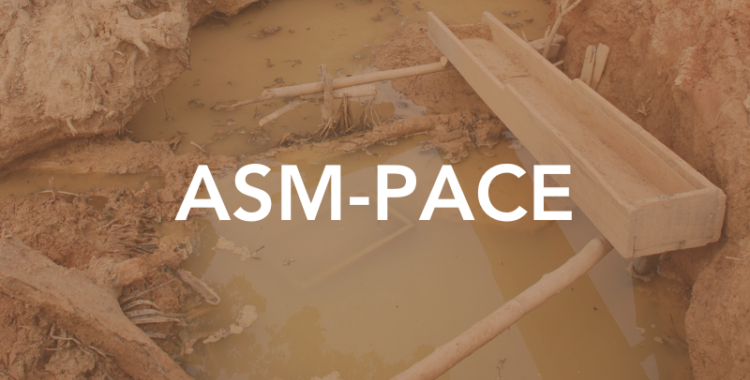At the Rio + 20 Summit last year UNDP put forward a proposition to embed sustainability concepts into a new Sustainable Human Development Index rather than developing a new set of global sustainability indicators. As someone working with Artisanal and Small Scale Miners (ASM) and as a believer in the need to radically change the ways in which humans inhabit this planet, the UNDP proposal makes sense to me. There is nothing intrinsically wrong about ecosystems; they will continue to maintain a relative equilibrium with everything happening within them, or collapse if they are pushed beyond their capacities of recovery.
When addressing the complex reality of ASM in key ecosystems it seems that 1) shaping human behaviour; 2) enhancing human development and 3) further understanding the resilience of particular ecosystems need to be at the heart of any conservation effort.
I believe standards have the potential to be an important tool for directing all three of the above. Standards exist to shape behaviours; when linked to market access and economic and social benefits they have the potential to enhance human development and they can be shaped to support particular criteria that serve different ecosystems and realities. So what are some of the limitations and opportunities to standards?
Understanding Limitations
Standards may not be applicable for incentivising change in all types of mining. They seem to work in relatively stable contexts; this means that only miners with an established livelihood in a particular place, with minimum legal, social and mineral rights will be willing to be part of such schemes. It is unlikely that standards have a role to play in a gold rush or similar situations where no social fabric exists around the mining activity.
Standards must be tailored to particular ecosystems. A dialogue and a compromise need to be achieved among different stakeholders, particularly environmental organizations, miners and local authorities to identify appropriate minimum and progressive standards.
Miners need to be able to benefit promptly from standards schemes in order to set a business case for further changes. Reality needs to be understood as the starting point and goals cannot be set for failure. This means that the gap between the desired transformation and what is realistic needs to be narrowed if miners are to see results in a timely fashion and stay engaged in the process.
Enhancing Opportunities
Standards initiatives such as Fairtrade & Fairmined have demonstrated that artisanal and small scale miners are willing to adopt better practices. The success of this engagement with ASM communities partly rests on seeing miners as legitimate actors with rights and obligations and as change agents rather than as a social or an environmental menace. The Oro Verde case in Colombia is an example of how a certification initiative can become part of a strategy to protect land and territory for local communities and for the environment by rewarding artisanal and traditional mining practices without the use of mercury or other toxic substances in one of the world’s biodiversity hotspots. In this case the miners are even conservation partners. I do not intend to say that this is an ideal As a poster from the Paris 1968 riots read: Be realistic, imagine the impossible.
The cost of conservation needs to be shared. When I speak to communities living in key ecosystems they many times wonder why they are being held responsible to protect scarce natural resources when the developed world has already used quite a lot of them in their own industrialization model. While this is a huge discussion in its own right, it does seem that in order to be successful certification schemes need to be linked to interesting market and other kinds of rewards. Otherwise, we risk asking the poorest of the poor to subsidize the world’s needs for environmental services.
Governments, industry and markets need to further understand ASM as an integral part of the mining sector and seek opportunities to engage with them on fair terms. The way ASM is seen by ordinary citizens is fundamental to their social, economic and environmental inclusion and this in turn is mostly shaped by the visions of governments, industry and civil society movements.
Using standards as a developmental tool for ASM is a relatively new approach in the sector. There is of course much to learn and experiment with standards in particular ecosystems and an overall need to upscale their impact on miners and markets. However, the proof of concept exists in the Fairtrade & Fairmined models. The time is ripe for relevant stakeholders to strike up conversations around specific opportunities for supporting miners in using standards to establish more sustainable artisanal and small-scale enterprises.
*The views expressed here are those of the author and not necessarily reflect the views of the Alliance for Responsible Mining (ARM).
Through its Guest Blog Series, the ASM-PACE Programme invites ASM experts to share their knowledge, experiences and opinions on issues pertaining to ASM, and particularly on ASM in protected areas and critical ecosystems, with the aim to foster continued dialogue, country-specific learning and share best practices on ASM interventions.
The blogs posted on this site do not represent the views of the ASM-PACE Programme, its donors or partners, or the author’s organization, unless otherwise specified.



